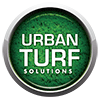Material Composition
The material composition of artificial grass has a significant bearing on its look, feel, durability, and environmental impact. The most commonly used materials are polypropylene (PP), polyethylene (PE), and nylon (PA), each with their unique characteristics and applications.
Polypropylene is the least expensive option and is frequently used for budget installations or temporary applications. It’s relatively soft to the touch but lacks the durability of the other materials. PP is more susceptible to wear and tear, particularly in high-traffic areas or under heavy use. It also has a lower melting point, meaning it’s not the best choice in high-temperature regions.
Polyethylene strikes a balance between cost and performance. It’s more durable and lifelike than polypropylene, boasting a soft texture and vibrant green colour that closely resembles natural grass. PE is also more resistant to high temperatures, making it a popular choice for residential lawns, commercial landscapes, and sports fields.
Nylon is the premium option, offering the highest durability and temperature resistance of all three materials. It can withstand heavy foot traffic and high temperatures without losing its shape or colour, making it ideal for high-usage areas such as sports fields and playgrounds. However, nylon turf comes with a higher price tag due to its superior quality and longevity.
In addition to these primary materials, artificial grass may also incorporate other components. For example, thatch layers of brown or tan yarn are often included beneath the green blades to mimic the look of dead grass, adding to the natural appearance. Some artificial grass products also incorporate antimicrobial materials to prevent bacteria and odour build-up, particularly in pet-friendly turf.
The backing material is another crucial part of the composition. It’s usually made from a perforated fabric that allows water to drain through. High-quality backing should be strong enough to hold the stitches in place, while being flexible enough to contour to the ground.
In conclusion, understanding the material composition of artificial grass is key to determining its suitability for your project. Factors such as anticipated foot traffic, climate, budget, and desired aesthetic will all influence your choice of material.
